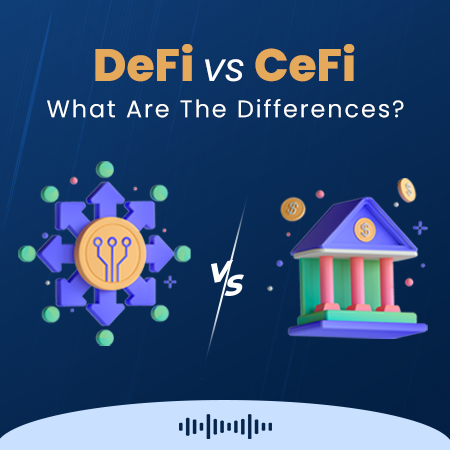Traditional financial services, including payments, lending, and borrowing, were formerly exclusively available via long-standing financial institutions and banks. But the use of blockchain technology is what triggered the shift.
The popularity of virtual currencies shifted the discourse away from traditional banking models and toward decentralized and centralized financial systems (CeFi).
To understand the pros and cons of CeFi and DeFi, we must first have a deeper understanding of both concepts.
Before the advent of Decentralized Finance, Centralized Finance was the go-to for cryptocurrency trading. It continues to be a dominant player in the bitcoin industry.
In a CeFi system, all cryptocurrency trade orders are handled by a single centralized exchange. Money must be managed by those in charge of running the centralized business.
It means you don’t have the private key to your wallet, which is necessary to access your funds.
The exchange will also detail the fees involved in utilizing their service and the currencies that may be traded on their platform.
To wrap up the concept of Centralized Finance, you do not have custody of the coins you trade when you buy or sell cryptocurrencies via a centralized exchange. In addition, you must always comply with the rules that a centralized business establishes for its users.
On top of that, you must follow the rules that the centralized exchange has set up. In this podcast, we will explore the difference between DeFi and CeFi.
Contact us today at admin@auxanoglobalservices.com if you’re interested in developing decentralized and centralized financial systems for your business.











